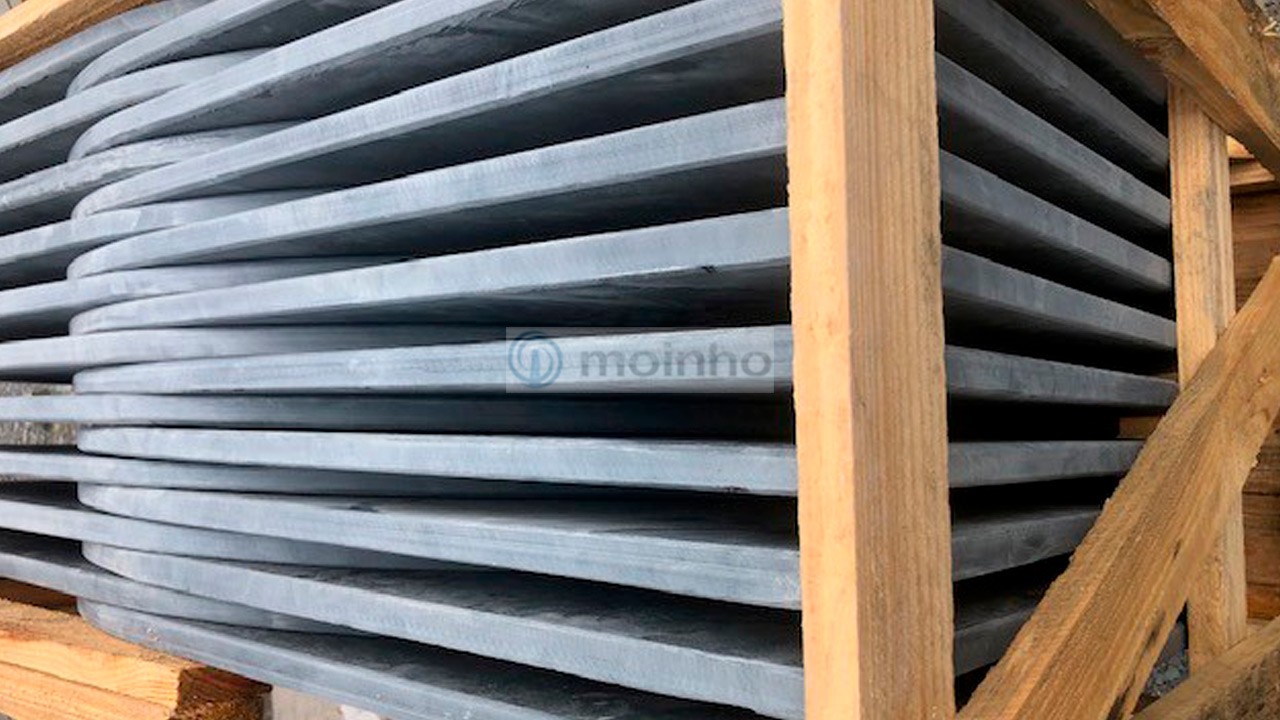The main reason we calibrate our slate is for creating a uniform thickness in our products. This makes it easier for installation, calculation, packing, transport, and as well for the adhesion of the fixing material it has a positive effect. Also the strength-test for the slate products while being calibrated, is immense, thus making the end product even stronger and knowing the internal material is solid as a rock.
Calibration Process
Calibration is done in two phases, the disc phase and the roll phase. First with the roll phase the material passes a diamond grinder fitted on a roll which carves lines inside the backside of the slate. These lines determine the thickness of the slate and prepare the material for the second phase of the calibration. In the disc phase a diamond grinding circular plate of rotated and pressured on top of the back side of the slate. Depending on the fact if the slate is used for internal or external flooring or as slabs, different dimensions of machines and diamond plates are used.
The end product of calibration is even thickness slate which passed a high pressure stress test. The lines on the backside of the slate can be circular or longitudinal or a combination of both. These thin lines on the back side will have an extra advantage in the adhesion of the fixing material like for example the used glue for flooring applications in slate. Moinho has the calibration machines for all sizes in our slate.


No responses yet